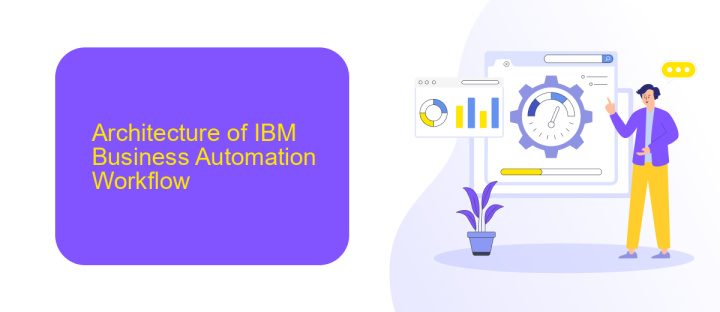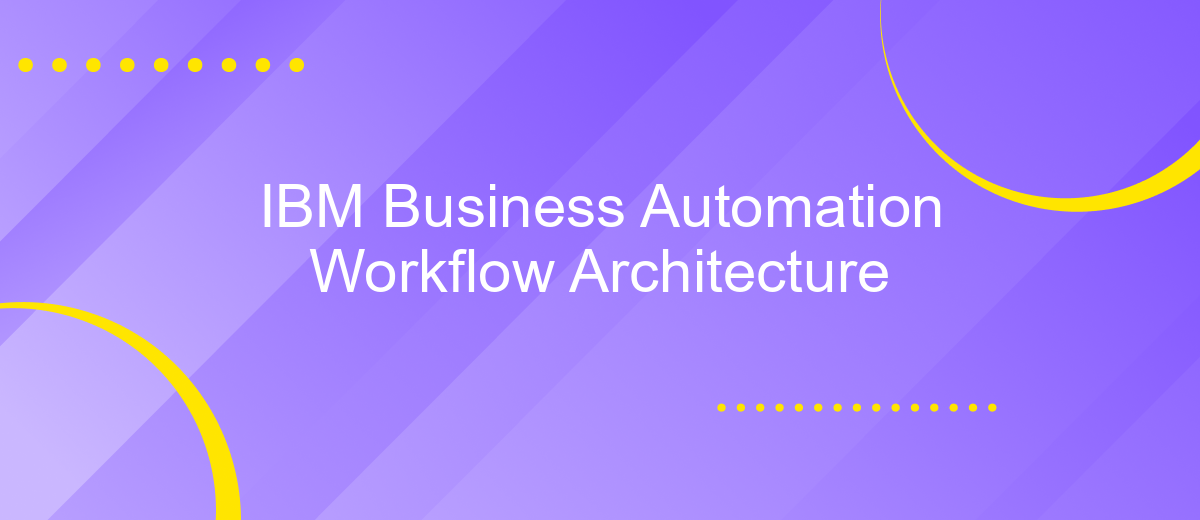IBM Business Automation Workflow Architecture
IBM Business Automation Workflow (BAW) is a comprehensive platform designed to streamline and automate business processes. By integrating workflow and case management capabilities, BAW enables organizations to enhance operational efficiency, improve decision-making, and foster collaboration across teams. This article delves into the architecture of IBM BAW, exploring its key components, functionalities, and the benefits it offers to modern enterprises.
Introduction
IBM Business Automation Workflow (BAW) is a comprehensive platform that combines business process management and case management capabilities to help organizations automate their workflows and improve operational efficiency. It provides a unified environment for designing, executing, monitoring, and optimizing business processes, enabling organizations to respond quickly to changing market demands and regulatory requirements.
- Streamlined process automation
- Enhanced case management
- Seamless integration with existing systems
- Real-time analytics and monitoring
One of the key features of IBM BAW is its ability to integrate with a variety of third-party services and applications. For instance, ApiX-Drive can be utilized to facilitate seamless integrations, allowing businesses to connect IBM BAW with other tools and services they use. This integration capability ensures that data flows smoothly across different systems, enhancing overall process efficiency and reducing manual intervention. By leveraging IBM BAW and integration services like ApiX-Drive, organizations can achieve greater agility and responsiveness in their business operations.
Architecture of IBM Business Automation Workflow

IBM Business Automation Workflow (BAW) is a comprehensive platform designed to streamline and automate business processes. The architecture of IBM BAW integrates various components such as workflow engines, business rules, and analytics to provide a cohesive environment for managing business operations. The core of the architecture is built on a robust process server that executes workflows and manages tasks, ensuring that the right resources are allocated to the right tasks at the right time. Additionally, the platform supports both structured and unstructured workflows, providing flexibility to handle a wide range of business scenarios.
One of the key features of IBM BAW is its ability to integrate seamlessly with other systems and services. This is facilitated through APIs and connectors, which allow for the easy integration of third-party applications. A notable example is the ApiX-Drive service, which simplifies the process of setting up integrations by providing pre-built connectors for various applications. This enhances the overall efficiency and reduces the time required for implementation. The architecture also includes advanced analytics and monitoring tools, enabling organizations to gain insights into their processes and make data-driven decisions for continuous improvement.
Components of IBM Business Automation Workflow

IBM Business Automation Workflow (BAW) is a comprehensive platform that combines business process management (BPM) and case management capabilities to streamline and optimize business processes. It integrates various tools and services to ensure seamless workflow automation and effective decision-making.
- Process Designer: A visual tool for modeling and designing business processes, enabling users to create, modify, and optimize workflows.
- Case Manager: Allows for the management of unstructured processes, providing flexibility to handle cases that require human intervention and decision-making.
- Content Management: Integrates with IBM FileNet to manage documents and content, ensuring that all necessary information is available within the workflow.
- Integration Services: Facilitates connectivity with external systems and applications, including the use of services like ApiX-Drive to automate data transfer and synchronization between platforms.
- Analytics and Monitoring: Provides real-time insights and performance metrics to monitor and improve the efficiency of business processes.
These components work together to provide a robust and flexible solution for automating and managing business workflows. By leveraging integration services and advanced analytics, IBM BAW helps organizations achieve greater efficiency and agility in their operations.
Architecture Benefits

IBM Business Automation Workflow (BAW) offers a robust architecture that enhances business process management and workflow automation. This architecture is designed to streamline operations, improve efficiency, and foster better decision-making through comprehensive integration and automation capabilities.
One of the key advantages of IBM BAW is its ability to seamlessly integrate with various enterprise systems, including CRM, ERP, and other legacy systems. This ensures that data flows smoothly across different platforms, reducing silos and enhancing collaboration. Additionally, the platform supports cloud, on-premises, and hybrid deployments, providing flexibility to meet diverse organizational needs.
- Improved operational efficiency through automated workflows
- Enhanced decision-making with real-time data integration
- Scalability to accommodate growing business needs
- Seamless integration with existing enterprise systems
- Flexibility in deployment options: cloud, on-premises, or hybrid
Furthermore, IBM BAW's architecture supports advanced analytics and AI-driven insights, enabling businesses to proactively address issues and optimize processes. For organizations looking to simplify their integration processes, services like ApiX-Drive can be utilized to connect IBM BAW with various applications effortlessly, ensuring a cohesive and efficient workflow environment.
Conclusion
In conclusion, the IBM Business Automation Workflow Architecture provides a robust and flexible framework for automating business processes and case management. By integrating various components such as process modeling, task management, and analytics, it enables organizations to streamline operations and enhance productivity. The architecture's ability to adapt to changing business needs ensures that enterprises remain agile and competitive in a dynamic market environment.
Furthermore, the integration capabilities of IBM Business Automation Workflow are significantly enhanced by services like ApiX-Drive, which facilitate seamless connections between disparate systems. This ensures that data flows smoothly across platforms, reducing the need for manual intervention and minimizing errors. As businesses continue to evolve, leveraging such integration tools will be crucial in maintaining efficient and effective workflows, ultimately driving better business outcomes.


FAQ
What is IBM Business Automation Workflow?
How does IBM Business Automation Workflow integrate with other systems?
What are the key components of IBM Business Automation Workflow architecture?
How can IBM Business Automation Workflow improve business efficiency?
Is it possible to customize workflows in IBM Business Automation Workflow?
Apix-Drive is a simple and efficient system connector that will help you automate routine tasks and optimize business processes. You can save time and money, direct these resources to more important purposes. Test ApiX-Drive and make sure that this tool will relieve your employees and after 5 minutes of settings your business will start working faster.

